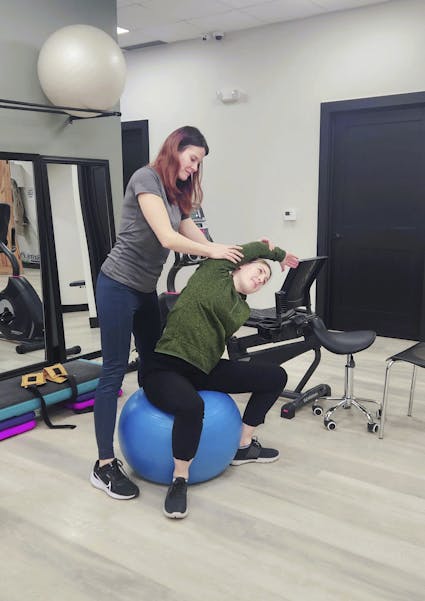
Specialized Physiotherapy is becoming more established in the literature as a first-line of defence against Incontinence and Pelvic Pain. Pelvic Floor Dysfunction can be caused by:
- HYPOTONICITY (Weak pelvic floor muscles): contributing to stress incontinence, urge incontinence and pelvic organ prolapse. Incontinence is NOT a normal part of aging
- HYPERTONICITY (Tight pelvic floor muscles): contributing to Urinary and Fecal Urgency, Urge Incontinence, Chronic Pelvic Pain, Dyspareunia, Vaginismus, Vulvodynia, Pudendal Neuralgia, Interstitial Cystitis and Chronic Prostatitis
medical accurate illustration of the hip ligamentsKegels are NOT always indicated for pelvic floor problems. Sometimes they do more harm than good, and often they are NOT performed correctly.
The Cochrane Collaboration 2010 concluded that Physiotherapists with specialized training in pelvic floor rehabilitation (using internal examination to teach the exercises) should be the first line of defence, before surgical consultation, for stress, urge and mixed incontinence in women.
Many people with pelvic pain have pelvic floor dysfunction, but specifically hypertonic muscles, or muscles that are too tight. The pelvic floor muscles are a group of muscles that attach to the front, back and sides of the pelvic bone and sacrum. They are like a hammock or a sling, and they support the bladder, uterus, prostate and rectum. They also wrap around your urethra, rectum, and vagina (in women).
These muscles must be able to contract to maintain continence and relax to allow for urination, bowel movements, and in women, sexual intercourse.
When these muscles have too much tension (hypertonic) they will often cause pelvic pain or urgency and frequency of the bladder and bowels. When they are low-tone (hypotonic) they will contribute to stress incontinence and organ prolapse. You can also have a combination of muscles that are too tense and too relaxed.
Hypertonic muscles can cause the following symptoms:
- Urinary frequency, urgency, hesitancy, stopping and starting of the urine stream, painful urination, or incomplete emptying
- Constipation, straining, pain with bowel movements
- Unexplained pain in your low back, pelvic region, hips, genital area, or rectum
- Pain during or after intercourse, orgasm, or sexual stimulation
- Uncoordinated muscle contractions causing the pelvic floor muscles to spasm
- Pelvic floor dysfunction is diagnosed by specially trained doctors and physiotherapists by using internal and external “hands-on” or manual techniques to evaluate the function of the pelvic floor muscles. They will also assess your ability to contract and relax these muscles. Your bones and muscles of your lower back, hips and sacro-iliac joints will need to be assessed as well since these joints can stress your pelvic floor muscles.
If an internal examination is too painful, the connective tissue of your abdomen, thighs, groins and low back are often very tight. The connective tissue forms the container of the muscles, and this tissue often needs to be relaxed before any internal work can be done.
When your pelvic floor muscles are tight and weak, the tension is treated before the weakness. Once the muscles have reached a normal resting tone, and are able to relax fully, their strength is reassessed and strengthening exercises are prescribed, if appropriate.
Self-care is an important part of treatment. Avoid pushing or straining when urinating and ask your health care provider about how to treat constipation. Relaxing the muscles in the pelvic floor area is important, and doing reverse kegels may be one way to help lengthen and relax these muscles. Using methods such as warm baths twice daily can also be helpful.
Medication such as compounded vaginal or rectal diazepam can be quite helpful and may be prescribed by your doctor. These medications can be used as local muscles relaxants in the vagina or rectum. Good posture to keep pressure off your bladder and pelvic organs, and other stretching techniques such as yoga, can be helpful to avoid tightening and spasms in the pelvic floor muscles as well.
Persistent pain education is an important part of treating pelvic floordysfunction since the pelvic area is an area that we often hold our stress. Anxiety, stress and our thoughts, attitudes and beliefs can perpetuate the pain in our pelvis; understanding how our pain system works has shown to be an effective way of reducing the threat of ongoing pelvic floor dysfunction.
